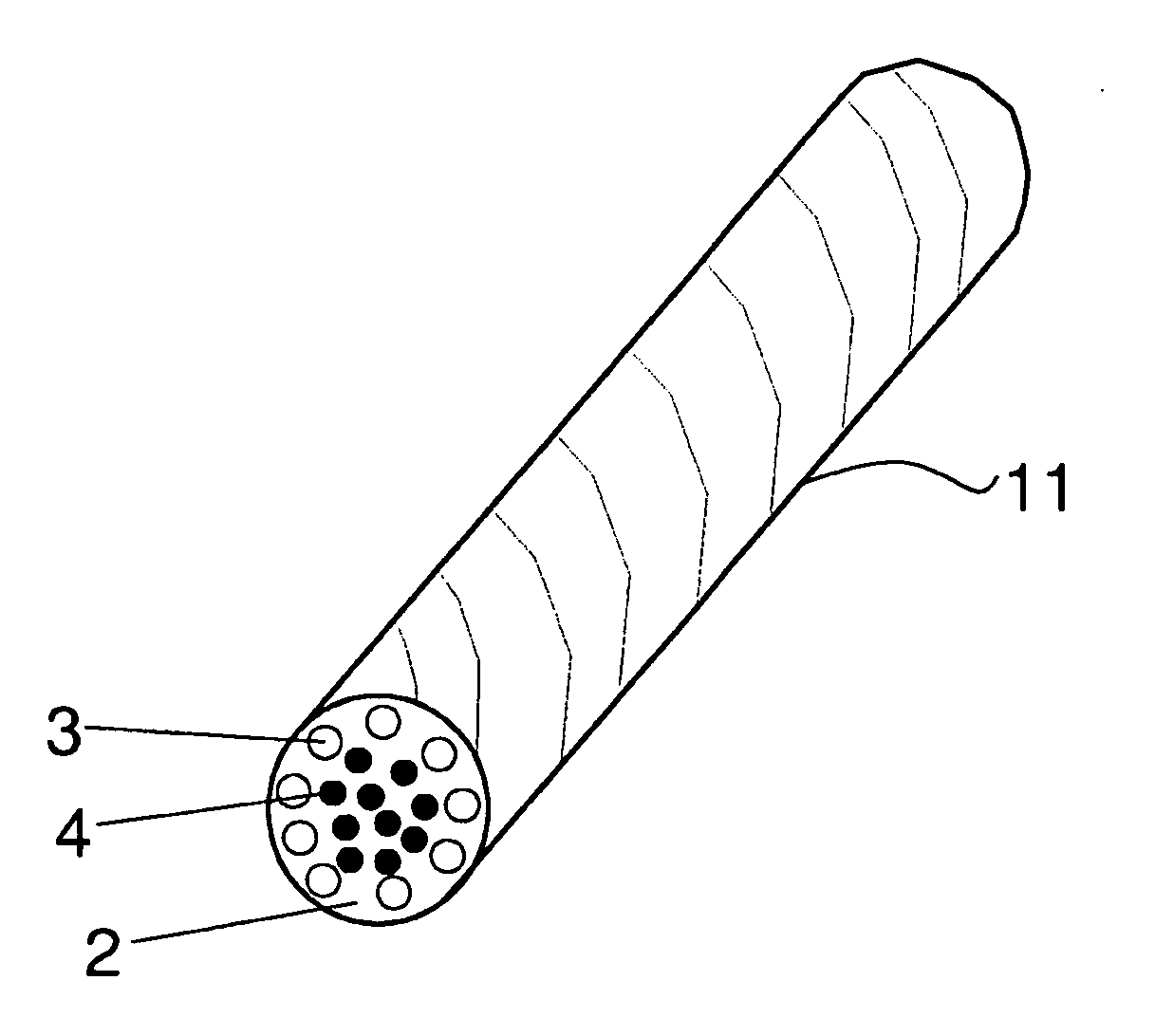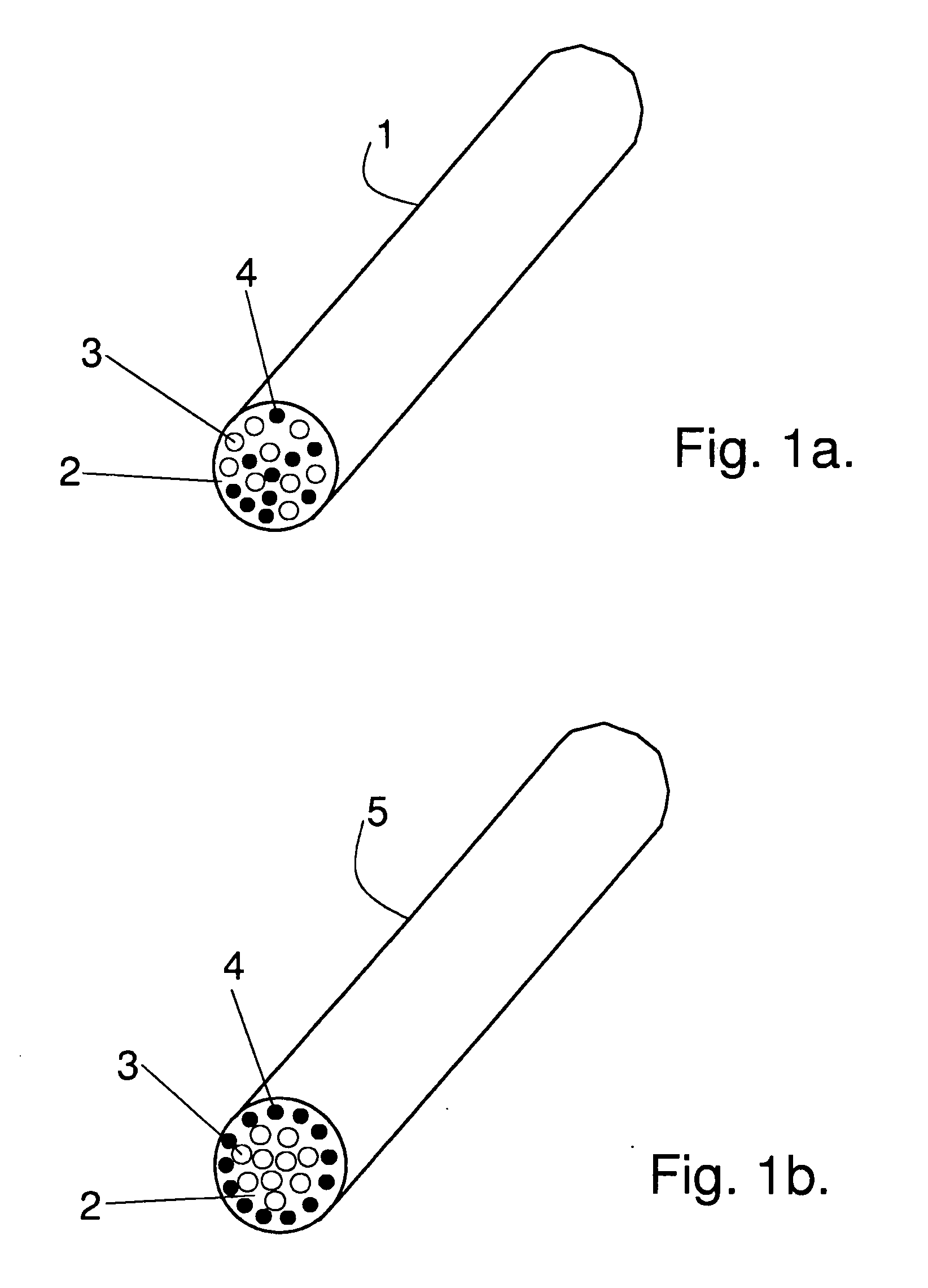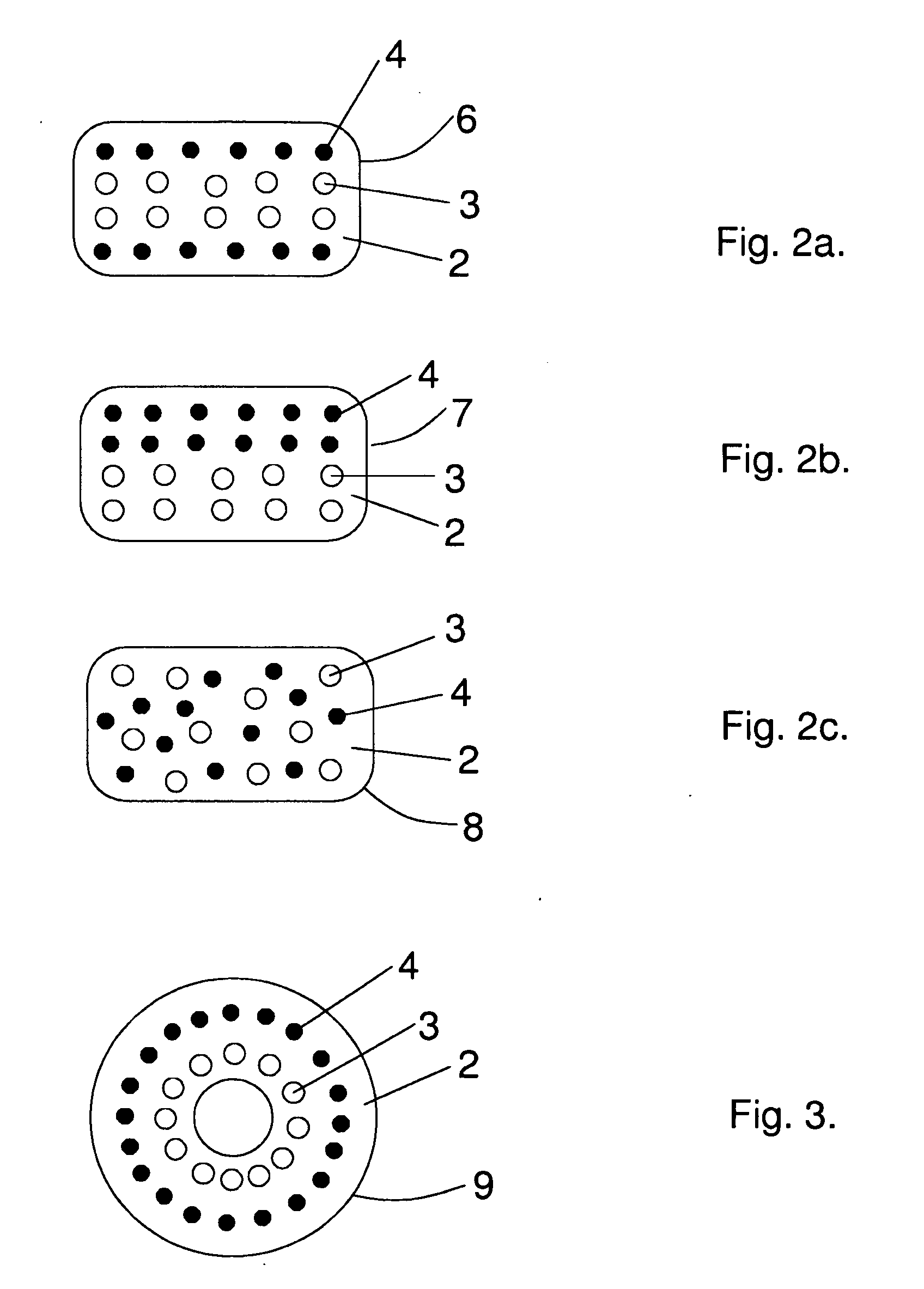Bioabsorbable and bioactive composite material and a method for manufacturing the composite
a bioactive and bioabsorbable technology, applied in the field of bioabsorbable and bioactive composite materials, can solve the problems that the reinforcement of fibers will affect the bioactivity of the device, and achieve the effects of increasing toughness and strength values, high stiffness, and increasing rigidity (modulus values)
- Summary
- Abstract
- Description
- Claims
- Application Information
AI Technical Summary
Benefits of technology
Problems solved by technology
Method used
Image
Examples
example 1
[0080]Matrix: Poly-L / DL-lactide 70 / 30 (PLA70), raw material from Boehringer Ingelheim, Germany (RESOMER®LR 708, Lot No. 290358, initial Mw ca. 370 000 Da (I.V.5.9-6.2 dl / g; when processed into form of flat strips MW ca. 215 000 Da)
[0081]Polymer fiber-reinforcement: Poly-L / D-lactide 96 / 4 raw material from Purac Biochem, the Netherlands (PURASORB® PLD, Lot No. 0209000939, initial I.V.5.48 dl / g; when processed into form of fibers Mw ca. 150 000 Da). The fibers with final diameter of ca. 85-95 μm were made by melt spinning with a single screw extruder.
[0082]Glass fiber reinforcement: Bioactive Glass 1-98 (53.0% SiO2SiO2SiO2, 6.0% Na2O, 22.0% CaO, 2.0% P2O5, 11.0% K2O, 5.0% MgO, 1.0%, B2O3),. Bioactive glass fibers with the diameter of ca. 20-35 μm were manufactured at Tampere University of Technology (Institute of Biomaterials) by glass melt spinning.
[0083]Polymer reinforcement used to bind BaG-fibers: PLGA 50 / 50, raw material from Boehringer Ingelheim, Resomer® RG 503, Lot No. 10044449...
example 2
[0089]Matrix: Poly-L / DL-lactide 70 / 30 (PLA70), the same raw material from Boehringer Ingelheim, Germany, as in Example 1.
[0090]Polymer fiber-reinforcement: This was made of the same Poly-L / D-lactide 96 / 4 (from Purac Biochem, the Netherlands) as in Example 1.
[0091]Glass fiber reinforcement: Bioactive Glass 1-989898 fibers (diameter about 20-35 μm) were manufactured at Tampere University of Technology (Institute of Biomaterials) as in Example 1.
[0092]Polymer reinforcement used to bind BaG-fibers: PLGA 50 / 50, the same raw material from Boehringer Ingelheim as in Example 1.
[0093]Test specimens having dimensions of about 50×10×1.5 mm were manufactured in same fashion as in Example 1. from preprocessed PLA70 flat strips (48 wt-%), bioactive glass 1-98 (BaG) fibers (42 wt-%) and PLA96 fibers (10 wt-%). The only significant difference here was that the PLA96 fibers were discontinuous. Circular shaped braids were cut from one side so that their final shape was a flat braid or sheet composed ...
example 3
[0100]Matrix: Poly-L / DL-lactide 70 / 30 (PLA70), the same raw material from Boehringer Ingelheim, Germany, as above.
[0101]Polymer fiber-reinforcement: Poly-L / D-lactide 96 / 4, raw material from Purac Biochem, the Netherlands. Fibers were made as above.
[0102]Glass fiber reinforcement: Bioactive Glass 1-98 fibers (diameter about 20-35 μm) were manufactured at Tampere University of Technology (Institute of Biomaterials) as above.
[0103]Polymer reinforcement used to bind BaG-fibers: PLGA 50 / 50, the same raw material from Boehringer Ingelheim as in Example 1.
[0104]Test specimens having dimensions of about 50×10×2.6 mm were manufactured in the same fashion as in Example 1 from preprocessed PI-A70 flat strips (52 wt-%), bioactive glass 1-98 (BaG) fibers (43 wt-%) and PLA96 fibers (5 wt-%). The BaG prepreg material was here about 2-3 times thicker (thickness about 0.65 mm) than in Example 1. and this thicker prepreg material was used only on the top and bottom surfaces of the test specimens, whi...
PUM
| Property | Measurement | Unit |
|---|---|---|
| diameter | aaaaa | aaaaa |
| diameter | aaaaa | aaaaa |
| diameter | aaaaa | aaaaa |
Abstract
Description
Claims
Application Information
 Login to View More
Login to View More - R&D
- Intellectual Property
- Life Sciences
- Materials
- Tech Scout
- Unparalleled Data Quality
- Higher Quality Content
- 60% Fewer Hallucinations
Browse by: Latest US Patents, China's latest patents, Technical Efficacy Thesaurus, Application Domain, Technology Topic, Popular Technical Reports.
© 2025 PatSnap. All rights reserved.Legal|Privacy policy|Modern Slavery Act Transparency Statement|Sitemap|About US| Contact US: help@patsnap.com



